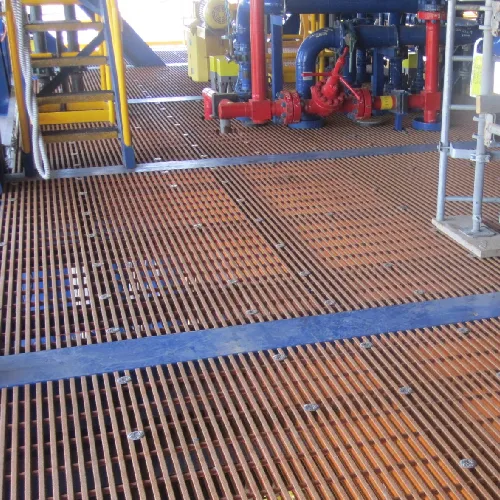loading...
- No. 9, Xingyuan South Street, Dongwaihuan Road, Zaoqiang County, Hengshui, Hebei, China
- admin@zjcomposites.com
- +86 15097380338
- Welcome to visit our website!
Cost Analysis of Fiber Reinforced Plastic Grating per Square Foot for Various Applications
Understanding the Cost of FRP Grating per Square Foot
Fiber Reinforced Polymer (FRP) grating has become increasingly popular in various industries due to its unique properties, including durability, corrosion resistance, and lightweight nature. As businesses consider implementing FRP grating in their projects, one of the primary concerns is the cost per square foot. This article explores the factors influencing the cost of FRP grating and what customers can expect when factoring it into their budgets.
What is FRP Grating?
FRP grating is a composite material made from a combination of glass fiber, resin, and other additives, creating a product that is both strong and lightweight. This type of grating is commonly used in environments where traditional materials like steel or aluminum may corrode, such as in chemical plants, water treatment facilities, and even architectural applications. The non-slip surface and excellent load-bearing capabilities make FRP grating a versatile choice for a variety of applications.
Factors Influencing Cost
1. Material Quality The type of resin used in the manufacturing process greatly impacts the overall cost of FRP grating. High-quality resins, such as vinyl ester or isophthalic polyester, offer superior corrosion resistance but are also more expensive than standard polyester resins.
2. Manufacturing Process The method used to produce FRP grating can influence the price. Custom manufacturing processes may incur additional costs compared to mass-produced alternatives, but they can yield products tailored to specific requirements, enhancing performance and longevity.
3. Thickness and Load-Bearing Capacity FRP gratings come in various thicknesses and can be engineered to support specific loads. Thicker gratings generally cost more per square foot due to the increased material usage and enhanced structural integrity required for heavy-duty applications.
frp grating cost per square foot

4. Design and Customization Standard sizes and designs are more cost-effective; however, customized solutions that include unique dimensions or specific performance characteristics will add to the overall cost. Custom grates may also involve additional engineering or design fees.
5. Market Demand and Supply Chain Factors The fluctuating prices of raw materials, changes in market demand, and shipping costs can all affect the price of FRP grating. If demand rises significantly, prices per square foot could increase.
6. Installation Costs It is crucial to consider that the cost of FRP grating is not limited to the material itself. Installation can incur additional costs, depending on the complexity and location of the project. Proper installation often requires skilled labor, specialized tools, and equipment, which can further influence the total cost.
Cost Estimation
Typically, the cost of FRP grating can range from $6 to $12 per square foot, depending on the aforementioned factors. For standard applications, a budget of approximately $8 per square foot is a reasonable estimate. However, for specialized or heavy-duty applications requiring custom fabrication, costs may exceed $12 per square foot.
Conclusion
When evaluating the cost of FRP grating per square foot, it is essential to consider all the factors that can influence pricing. Users should assess the specific requirements of their application, including environmental conditions, load-bearing needs, and whether customization is necessary. By understanding these factors, businesses can make informed decisions that align with their operational goals and budget constraints. Overall, while the initial investment in FRP grating may be higher than traditional materials, its long-term durability and minimized maintenance needs can lead to significant cost savings over time.
-
Revolutionizing Industrial Safety with ZJ Composites' Mini Mesh GratingNewsNov.14,2025
-
Premium FRP Profiles and FRP Grating Revolution for Global WholesalersNewsNov.14,2025
-
Ultimate Strength with ZJ Composites FRP Profiles for Wholesale SuccessNewsNov.14,2025
-
ZJ Composites Covered Grating – The Durable Flooring Solution for Smarter Industrial SpacesNewsNov.14,2025
-
Mini Mesh Grating Enhancing Strength and Style in Every ProjectNewsNov.14,2025
-
FRP Pressure Vessels by ZJ CompositesNewsNov.14,2025
-
Transforming Industrial Spaces with Advanced Frp GratingNewsNov.11,2025
